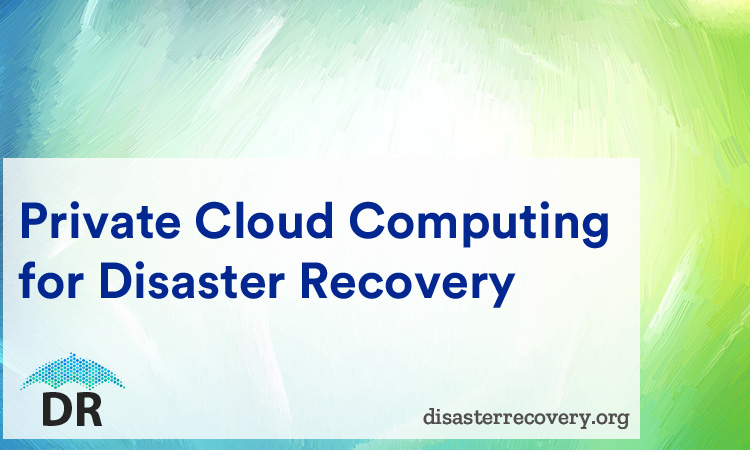The top priority for an IT Manager is to get the system back online after downtime due to any reason. Most businesses depend on their IT infrastructure for day to day business operations. In this context RTO (Recovery Time Objective) and RPO (Recovery Point Objective) are very important. These metrics define the businesses expectations of how soon and the point to which IT infrastructure should recover after shutdown for any reason.
Private Cloud computing for Disaster Recovery

A well-reasoned and planned IT policy will ensure the recovery time is well within the Recovery Time Objective and Recovery Point Objective. If the recovery procedure exceeds the RTO and RPO metrics, then it could cause loss of customer goodwill, loss of revenue along with a host of other problems.
Depending on the type of business, the RTO and RPO times may vary. If every moment of data lost translates into money, the RTO and RPO times may be very small. The smaller the time, the costlier will be the DR solution. The other challenge facing IT Managers is restoring data to the system. This could be a cumbersome process since the data has to be reloaded, security patches have to be installed along with software that is required.
An efficient way to restore lost data is by having a mirror restore. This solution means storing back-ups at an offsite location and reloading using this when needed. Another cost effective and reliable Disaster Recovery (DR) solution is to use the services of private cloud.
What is a Private Cloud?
A Private Cloud is a separate cloud environment meant for access and use only for a specific client. It cannot be used by anyone else. The Private Cloud will use a physical computing hardware to provide a virtual environment in which the client can operate. Since a Private Cloud has only one user, control, privacy and security is enhanced.
A Private Cloud typically has ring fencing for the sole use of a client, unlike a public cloud in which several users will be accessing it. This private nature of the operating environment will enhance the security of the client organization.
The main advantages of a Private Cloud are:
- Privacy, control and security of sensitive data are very high. Access can be restricted to authorized users from behind the organization’s firewall using dedicated lines and this means that it will be next to impossible for unauthorized persons to gain access.
- The client organization has more control since it is the exclusive user of the Private Cloud
- It improves efficiency since each department need only be allocated IT resources as per their business needs. It also reduces costs, but due to smaller working environment, the full reduction in costs due to economics of scale will not be possible.
- Using a Private Cloud improves reliability since a virtual operating environment can be created, reducing the need for physical infrastructure. By providing virtual partitions, in case of failure of one server, resources can be accessed from the unaffected servers.
- If there is a sudden surge in demand, some service providers offer cloud bursting. This allows the client to switch non-critical, non-sensitive functions over to a public cloud. This will free up space in the Private Cloud to handle the surge.
Using a Private Cloud for the organizations DR functions
Using a Private Cloud for Disaster Recovery is becoming increasingly popular these days. One of the main reasons is the security aspect. Since only one client is using the Private Cloud, the operating environment is highly secure. Also many Private Cloud service providers offer Disaster Recovery as a service in that environment.
Some of the advantages of using a Private Cloud for Private Cloud Computing for Disaster Recovery are:
- Once compatibility issues between the client’s infrastructure and the Private Cloud are taken care off, then the Disaster Recovery plan should cover all the infrastructure needs of the organization plus some extra for redundancy. This is relatively easy to do.
- Security is much higher since a Private Cloud permits only one client to access it. The organization should do due diligence and check how the service provider encrypts data and what type of authorization procedures they use to permit access to the Private Cloud.
- Once the reliability and scope of service of the service provider is determined, it is possible to get a service guarantee from them. This is important because when disaster strikes, if services are found wanting, the problems will rapidly escalate and go out of hand.
- Most service providers have a standard schedule of testing. This can be checked out and suitability ascertained before signing up for their services. This will ensure the Private Cloud Computing for Disaster Recovery will work in a disaster scenario.
Since a Disaster Recovery plan is money spent upfront and returns are only discernible when disasters strike, costs consciousness is a priority. Using a Private Cloud offers a highly cost effective, secure and viable solution to an organization’s Disaster Recovery (DR) needs.

